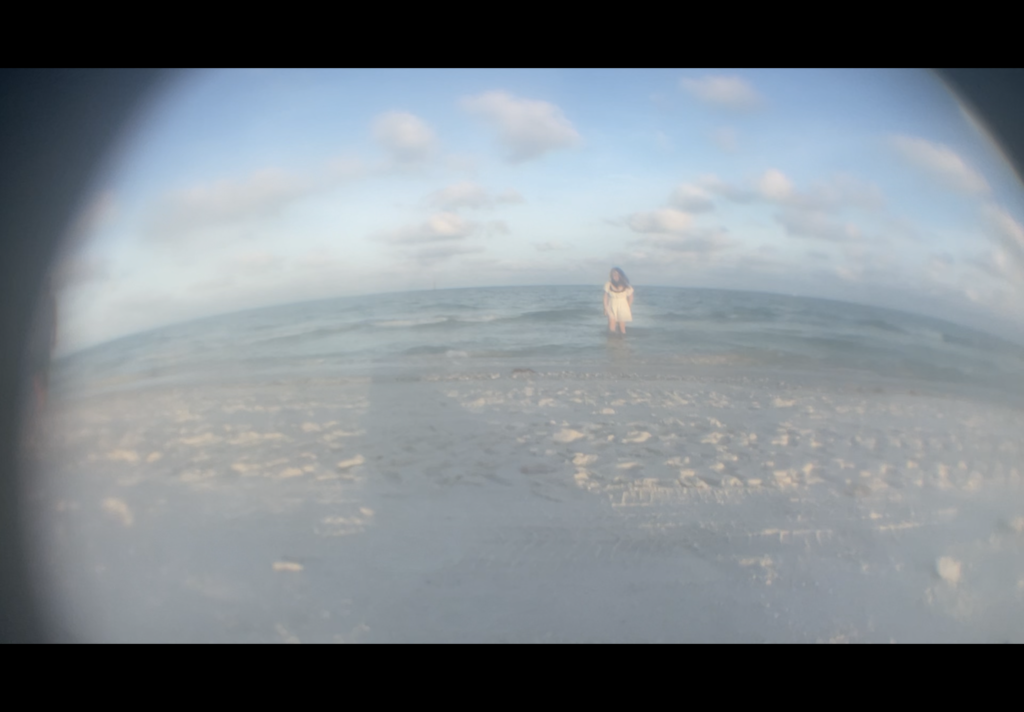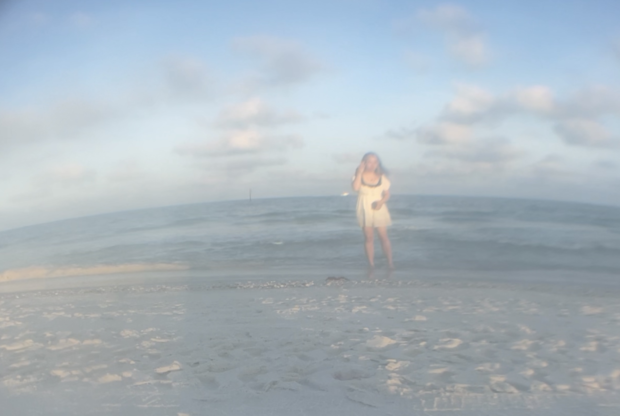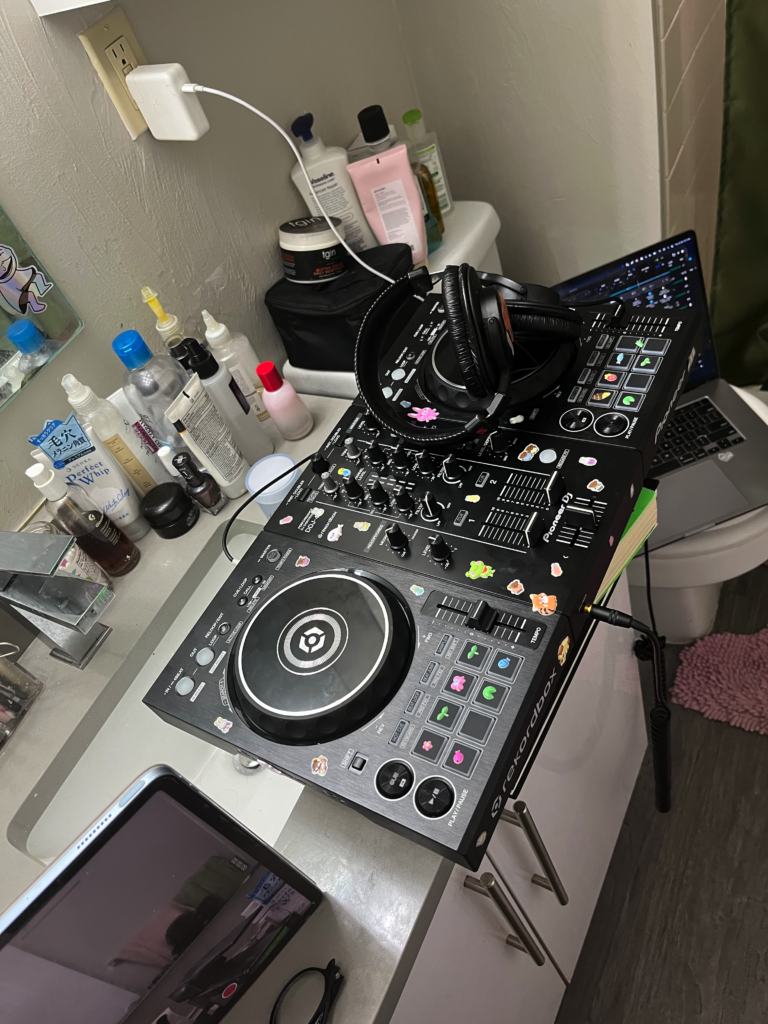( an image of me field recording in early may )
( very early thoughts, in the midst of reading a stack of books, learning all before me, trying to name what can become of me after )
Maybe now I can call myself an artist.
naming
There were specific forms that art needed to live in. I didn’t know if I wanted to dwell in those forms.
I don’t think I understood what art and poetics meant, even if it was all around me and I was already creating it. In my first-year art classes at Yale, I was grouped with a rich girl closely associated with the PERIOD-brand of high school menstrual activism organizations that often meant public speaking and “anything you can do I can do bleeding’, back when I wasn’t sure that I was a girl. She suggested making a sculpture out of tampons and pads and hanging it somewhere and I didn’t know how to respond as I was busy thinking of my mother, a practicing OB-GYN for nearly two-decades, was terrified when I told her I began using tampons. I was interested in Philippine abortion forums and doing something that I didn’t know then was called performance art. I broke off from the group and made zines and websites that read as ‘impractical. In the middle of Duterte’s term, I collected stories of extrajudicial killings and juxtaposed with religious paintings from art periods I didn’t know (and still don’t know) how to name as inspired by Pieta. I spoke lightly of my history and didn’t know what the American modes of activism meant and thought of making something more utilitarian for an audience that didn’t know my context when I didn’t yet have the words to say how I loved my country and how I didn’t know if this artifact would get the love across.
“i love listening. it is one of the only spaces where you can be still and moved at the same time.”
Nayyirah Waheed
I was always interested in counterculture. I listened to music less for the sound but more for the community it gave me, which is a roundabout way of saying that I was deeply engrossed in making content about Pete Wentz and reading Ryden fanfiction around the 2000s. When I had outgrown the blanket it gave after walking around Hot Topic in a trip to the United States where the counterculture seemed less counterculture when I could find it in a suburban strip mall, I started actually listening. I thought briefly about videogame composition and the origins of sounds around me; I wrote frequently about the sloshing inside my head and how I was terrible at the piano and all the phantom noises when boxed in a room. I revisited this two semesters after that period class at Yale, where I enrolled in a Sound Art class that changed my relationship to listening. I identified with the modes of layering my own stories & identities within sound & sculpture, back when (and still) struggled with explaining the entire history of me succinctly in a class crit with everyone who already seemed to be speaking the same language.
Where could art take me if I could not dwell in it? What use was art if it could not carry something for the people I loved — if it wasn’t tangible, realistic, if it wasn’t something we could easily consume and digest? I had no words for movements, had no knowledge about other artists or creators, and could not same a single gallery space in Manila for all museums but private ones were shutdown and even my artist friends were only derivative artists and we all lived in the city and thought we must be condemned to the noise of the city and would only ever produce noise for the city and live soundless lives. But the machine, which I stubbornly kept returning to, offered me a dwelling; it was the medium for a world, and a medium for other mediums.
One time in Manila we drove four hours up to the nearest museum and saw commercial grabs and Instagram photo-ops and in the corner there was this one piece of a graveyard and a prayer and I told my parents that this piece is about them and what they feel about it and they felt nothing. I think there is a level of detachment required; which is difficult when you’re constantly surviving and immersed in life. It takes a way of looking to realize that art is about you. It takes a way of living to realize that art is all around you—that this isn’t just some torturous box—and perhaps, by the elevation of experience, we can get out of this.
It takes listening.
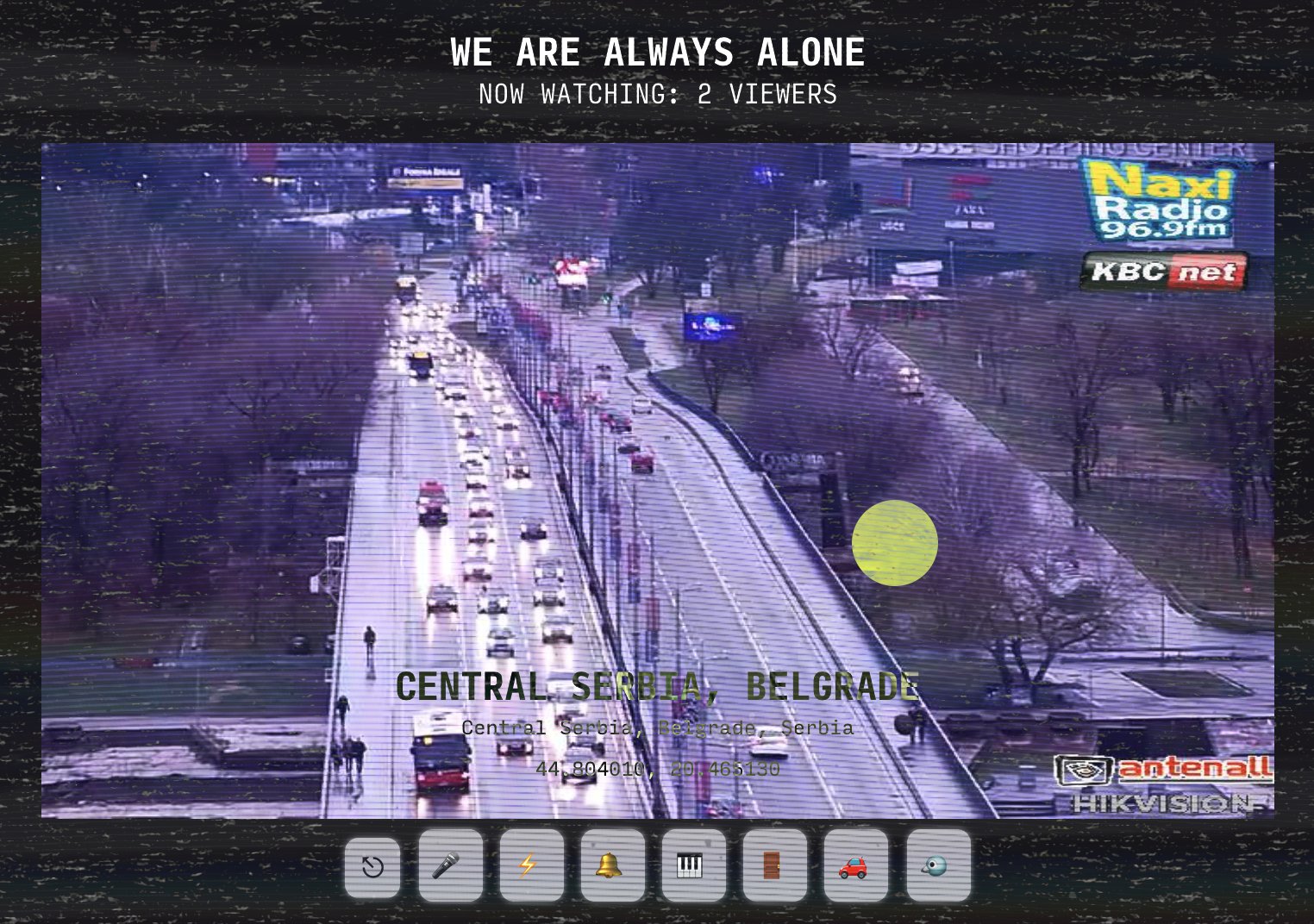
I delivered sound through a website, poured through archives and CCTV feeds, and wrote bits about the culture of surveillance in the Philippines. I gave the project a stupid name called ‘noob.systems’ now expired and being sold for $888 on a scam website. It was aesthetically weak and I didn’t know how to highlight every facet of it: how I selected the streams, how the computer microphone and the sounds on the control panel were imposed and overlaid and sounded to any other viewer of the website, how the console would deteriorate with more viewers, my own experience researching the complicity of my major with atrocities going on in the Philippines, and presented a sound and relationship to sound that was only possible through the networking and access afforded by the internet. Space, here, was integral, as in the feedback loop I created and in the space of the internet which was the only possible way the work could exist. If you listened, you could understand.
With sound I did not have to speak a language. The sound had filled the room and then it filled me and then it told me all I needed to know. (And soon it had become all of me, the invisible underpinnings of what I valued and what I desired and the medium in which I developed and created just as I danced and pinned my ear. And then I understand what flourishing might have meant, and then I understand what they were talking about when we can name clusters of art and genre and this might be a newness that I seek to engage in and name for the rest of my life.)
A summer later I bought microphones and fell in love with voice memos and recalled the glory of sound where I thought there was nothing, because there is always sound, because nothingness is a type of sound. I bought a field recorder and sat in the cold of the graveyard to attempt to hear birdsong and fell in love with a city for its tones that I thought no one else had appreciated. I spent my years of college traveling alone and then with people I loved to New York and back via MetroNorth to hear sounds in churches and fields and clubs and the underneath of bridges and understood how they brought people to gather; then I found bookstores and met old friends who told me that after they graduated from Yale they went into construction and now live in a house with six other people and the construction is just an ends to continue pursuing sound. And we exchange cassette tapes and ambient noises and questioned what is noise and the experimental world of sound carried to my thinking about machines, to what the noise of New Haven was, to what was my world and in the background of my world. And as if as pristine and pure as light, I had something to come to.
ambient
Sound has an important temporal nature, a requirement of presence, an enveloping presence that requires an intentional shift to focus and hear and negate something else. It’s almost like magic.
For the 1-3 hours we’d spend at church every Sunday in my 18 years of life in the Philippines, I learned to pass time by isolating a sound source: sometimes a person squealing, sometimes the illness in the priest’s throat, the fishball cart at the side of the road, the whistling from this tree or that, the creaks from our shifting movement on the pews. It was as if the command of the word ‘god’ became a personal 4’33. Genuflection at the grand red carpet, altar boys, outfitted chorales, a piano at the side of the waiting priest’s robes—this obtuse arrangement in a sacred yet decrepit building became the orchestra at rest. The closest to godliness I felt was the space around what they deemed to be god and his body, a re-orientation of belief by interrogating the question of what I could believe in. I don’t name spirituality in anything but it might be closest to purpose, to reason for being. In this new way of hearing, almost like baptism but with personal ritual and no actual radical feeling, I had almost been reborn.
Listening within a single point in time had become deeply immersive, yet also impossible to divorce from the world of context around it. Nature was a seeming fantasy in urban Manila but streaks of it still littered in my house where all our windows were told to be drawn at every moment, where never had daylight as a source, where I swore my bed might be the casket under the blue light of my screen, where all the lights were always on and no one ever peered in. When I say I hadn’t lived it must be because I was lacking the grounds from which they say I was shaped from by clay.

When I began reading about sound I wondered how true this was, I wondered what we discerned as machine, and I wondered if I myself could have been a machine of sorts. The church began taking the shape of a machine: operant so formulaically, a repetitive drone towards a cycle of what the teenage me named as more than brainwashing—something more deeply putrid in its rewriting of history and values. I thought this machine such a deep system. I thought my teenage self as a discursive machine built to question and be hurt for questioning, but with no task in sight other than that. While there was the sound of noise, signal, and the television I thought that life was loudest in the most rural of places far from urban Manila. My trips around the Asia-Pacific in high school often brought me to conference rooms and hotel event spaces filled with hundreds of clattering machines & robots, then to a near-abandoned train station and empty courtyard. And somehow in the silence of everything life felt the loudest.
I had forgotten the Universe itself was technology, and that all real had once been mythology, and that to truly develop something sustaining and meaningful necessitated a sort of synergy and desire to break apart the operative principles of what was already here. And that there was so much more here than what I immediately sensed. So I began listening.

Tan Lin’s ambient literature is interested with the book as a form of technology: mixed media, sampling, communal production that heavily touches on the internet. Books are commonly written to elicit a feeling or emotion, but they’re invested in invoking a general mood & atmosphere, thinking about the atmosphere the act takes place in. Lin believes that the ‘mood’ is more reflective of our overall lives; it’s easy to read something that makes you feel a sense of dread, sadness, or joy — it’s harder for your entire temperament and state to shift. While it is less intense, I feel for a reason, that more ‘backgrounded’ forms of consumption and media carry over to the next identities and spaces I find myself in. Maybe this desire to play with the subconscious is a bit nefarious — but what ‘silence’ and what ‘defaults’ exist have always been open, shifting questions.
When all shut down I began learning to live wholly by myself. I began to, in the midst of withdrawal and learning to speak the language I needed to speak in this new country, dream of creating artifacts that would outlast me and tools for the world I had abandoned to continue carving my vision — or better, a vision and imaginary I was physically distant from. I admired the quiet and stillness and isolation, which I learned to make distinct from loneliness, because it was often in this isolation that I realized how deeply interconnected I was. Particularly: my departure from a system where the system would continue to function was not a cause of sadness or fear, that necessity can be measured in a multitude of ways.
Buckminster Fuller describes the Universe as a scenario composed of individual systems; these systems are boundless, weaved with one another in endless ways. The system as the couch I sit on, a figure, a room, a thought, an ecosystem, the tape loops I splice and tape back together, the three-head cassette deck in front of me.
In those classes I realized that it was in the pursuit of ‘ambience’, whether auditory, textual, visual, or in ‘ambient interactives’ that invisible and oppressed narratives could now take the forefront; that we had become deeply out of tune with our senses and interdependence, including myself with my own. I was so invested in thinking about art solely as ‘translation’: a translation of my experience to be palatable to these new audiences, a translation of my fears and transgressions into utilities that often came out of capitalistic lines of thinking—that I forgot the beauty of media and form was that a sound cannot ever be perfectly represented as an image, that a moment cannot ever be perfectly represented by sound, that reproduction is an invitation with an expectation of loss of depth. The way objects become deprecated, ephemeral, fragmentary capsules as fallible as our memory. I then turned to listening to what was here, to embracing loss and artifacts, to recognizing loss as integral to the evolution of a system—or the reframing of loss as an act of supplantation; these acts of recognition only came with a shift in my own
I hate the equation of the ambient with silence. Ambience is rattling chatter, machines, not just the natural environment — especially when we increasingly reside in environments of our construction and making, where even the capacity to recognize this means of construction appears to be a privilege. Natural defaults and ambiences are now mere parameters of our control, and as meaning-making creatures, we continue to choose what we foreground as we choose tacit constants the underpin our life.
“Silence isn’t the absence of something, but the presence of everything”
Machines were dense and powerful and forgetful and stewarded by man. Noise is never conflated with silence, as silence is not ambience, but many forms of noise have become our ambience. Noises tend to be things we have learned to ignore. Machines have made complex the environment we live in today, yet attempt to superficially present a minimalism and simplicity in their offerings. Maybe this is natural to evolution; as the futurists were wrong in saying that it was only in the exceptional movements of nature that sound, the natural evolution of the universe has intertwined and produced new organic sounds since primordial times. It is then expected that man makes machines, and for us to recognize the constitution of what these machines can be and herald responsibility. It is selfish to answer the plague of pollution and information attention with more silence (now more interesting than ever as it is lost). While valuable — the more interesting question might be in what we decide is noise and what is ambience. What is worth hearing and what is worth ignoring? What are we listening to? When can we withdraw? What is deemed invisible?
Murray Schafer writes “Can silence be heard? Yes, if we could extend our consciousness outward to the universe and to eternity, we could hear silence. Through the practice of contemplation, little by little, the muscles and the mind relax and the whole body opens out to become an ear. ”
Next, the question is where these groves of silence need to be planted. Even in religion, I could not find this sense of stillness. “Before man, before the invention of the ear, only the gods heard sounds.” What I’m clamoring for was the closest to godliness I felt, after all. Where else is solitude worthwhile to pursue? In what technologies can I frame it, within which system can we reliably plant it in, and which environment does it most need to exist?
Particularly, how we convene on the internet has shifted: the computer cafes I rushed to are not the reality shared by the Western world where computers and smartphones are now the devices of ubiquity—the gathering space now presumes a spatial separation in the real-world antagonistic to the stream of information that now over-commodified forms continuously demand. This misalignment is jarring. There are subtle sounds of presence, stories, and selves that the internet might be better suited for. In the way that it is now so all-enveloping that digital networking and the internet is ambience in itself, it still is a larger system, or maybe even a new Environment that we operate in. When I was moved to listen deeply in this hostile online space, it reminded me of the false promises at the anterior of many institutions I had departed, and served as a reminder that the tenderness was waiting to be found in its adjacencies. While it might be overly optimistic to liken the internet to a physical space this early on, it still very much is a dwelling space and network: a space with physical (with many of these physical spaces and infrastructures cloaked) and digital manifestations (with many genuine, tender spaces — as I have found understanding, faith, and community in its corners). Many structures that live on the internet don’t adhere to the stillness in the real-world, a stillness that disappears in both environments. There are few equivalents to a rural field, park bench, or silent chatter in some sacred space in the internet. We question the promise of connectivity it offers us which is often more alienating and isolating: who are we being connected to, which body dictates these paths of connection? How can we reform it to be owned by our own selves? “It would be nice to take a walk inside a visual field, a poem, and a plaza where people lunch,” Tan Lin wishes. We constantly wander and tread through the internet, without a place to rest or care, subsequently without place to think and feel truly connected. It demands constant motion and attention, without understanding that one is most moved in stillness.
art
The internet might be my primary environment. (I’m still learning to articulate this: but I still feel that it was only within the internet that I knew myself, a powerful out when I was born in a repressive and hostile environment.) The internet is where I’m interested in exploring modes of ambience. While I’m still exploring sound art, field recording, and ambient music distinctly, I’m interested in the question What is the sound of a website? In the way that we’ve began constructing sounds for electric vehicles that as complex as they can be mapped, never meet the roar of the first engines we created, causing disruptions in the metaphors we grew up in and in the new technological sphere where newer generations have no recollection beyond a fantastical y2k dream of the very metaphors that nascent machines present toward. Our very machines are leaning towards silence, but all the wrong kinds. What we choose to make invisible matters—and oftentimes what is presently invisible must be edified. What is invisible today appears to be human labor, emotion, senses, an awareness of infrastructures. The indie and handmade web movements question the lack of love and care in technology, the need for folk software and small-purpose tools and the over-exaltation of optimization and efficiency. And love, continuing onto Tan Lin’s invocation of mood, might have always been a state of generation and co-existence and interdependency and a love for what is present and a desire for this presence. Are these the principles I seek in the worlds I live in?
Constructing ambience is also a point of interest in my larger practice of worldbuilding. Worldbuilding came in the escape of cultural institutions by constructing my own reworked versions of them: my familial space, leaving the church, navigating the sociopolitical & cultural institutions in the Philippines, the finite game of packaging my interests as a designer in building creative tooling and infrastructures. I’m interested in the internet because of its flexible artificiality that we all can’t deny we’ve bought into: there is a plurality that the masses have forgotten about as corporations have taken all these capacities for shaping new worlds to craft their own default. e.g. This is the network where you can meet all your friends with ease; that there are all these private spaces that masquerade as public common grounds. The internet’s ambience has been seized. It is in this reclamation and restoration of pluralities that I seek to work towards across my practices of creating websites, teaching & tooling (how different are they?), to gather around new environments and see what emerges from them. A sound of a website might be one of those points of interest in this emergence.
While sound and websites are the primary modes of ‘ambience’ I’m in pursuit of, they continue to build on and appropriate all forms of ambient poetics: ambient literature, image, form… it is in this line of questioning that I revisit what we consider the commonplace, the modes of distribution and media so universally expected in the shaping of this universe. Sound is almost just a metaphor to let me engage in questions about gathering, ‘intentional’ listening, instrumentation & tooling, silence or nothingness. It’s in its everywhereness that one who has ever understood the magic of the return of vinyl might begin to understand the importance of ritual and physicality and presence when they spin wax, or even before that the act of discovery that comes from finding a record at the store, or even before that the inquiry of thumbing through digitally-delivered sound on an endless, instantaneous Spotify streaming library and why they want to move to the physical world.
Ambient poetics (and ambient aesthetics writ large) critically appropriates such techniques—widespread in contemporary culture—for the purposes of affective mapping and re-mapping. It provocatively poeticizes the consumer atmospherics and ambient technologies of control, confronting us with the spaces and durations of the present, and allowing us to imagine what spaces and durations “we might not have inhabited,” to quote Lin. Or might inhabit otherwise.
Reading Machines, quoting Tan Lin
It’s in this ambiguity and openness to emergence that I consider the move towards ‘ambience’ a communally generative act—a constant hope I wish my work elicits. I think playing by manipulating subtleties is navigating the same games used to steer technology into its commodified, domineering form today. That is, I can continue shaping machines and one-off materials (and single-purpose poetics also are so critical to me), but I’ve experienced time and time again how these are largely unsustainable — the machine just becomes another noise in the system, soon to be obsolete and deprecated. I’m interested in making things that elicit moods and new ways of being so ubiquitous through all forms of media that live in the commonplace of this century that my name is concealed, almost trivial to all the branches and roots that have sprung forward that I can continue participating in and nourishing. I desire what is interesting and ignorable. I desire the formation of spaces and websites and moods that are as nourishing as the reliable fluttering of light from the curtains into the kitchen, that match the serenity of looking into an ocean and seeing this constant vastness, to an awareness of invisible defaults and materials insupplantable in a life so complex.
I think, to construct ambience or even begin being interested in it, was a key shift in my imaginary. I was drawn to and making it before I could even name it; and didn’t realize that gathering, defaults, a disruption of institutions, a reclamation of spaces, an awareness of the new world spaces we live around, a plea towards loving so sincere and certain that it is almost said so silently — had become who I am. When I couldn’t articulate in words why I was interested in surveillance, the gaps within my letters may have said it for me. I’m grateful to everyone who listened before I knew how to listen to myself.
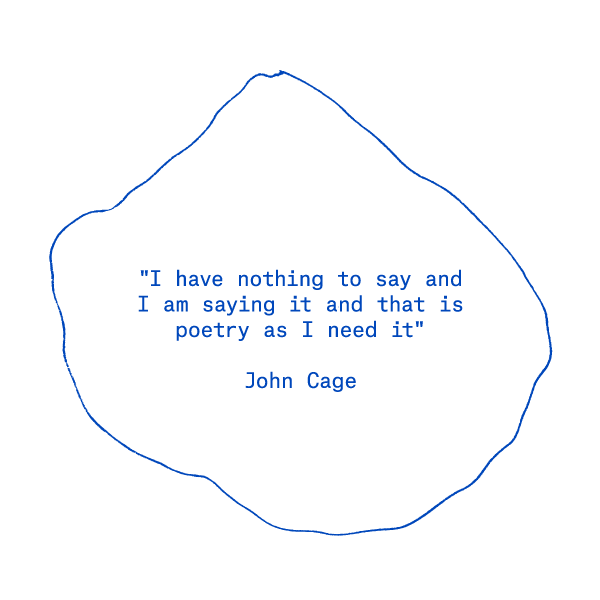
Just as ‘ambience’ is often regarded as the structures and sounds that have slipped from cognition (which is why I tell everyone, with the fascination of tapes and cassettes and to come over and drink and to listen to this record to me, to first listen to the sounds of the room and our voices and the hum), my teaching and participation in this with this ‘heightened’ new self and understanding of my consciousness involves this calling of ritual and naming to what others experience so they can too, understand, what defaults and poetics and worlds they currently live in and how they can shape it today. Preservation is also an integral act here. We want to preserve silence, but we also want to preserve noise. What was once noise, what was once obsolete, what was once natural or even manmade will one day wither. Collections of sounds become our identity. Only what is presently preserved can be ambient, because it must exist, even if it is just the idea of it… Mathematics can only so much define sound but never wholly the act of listening. I am interested in gathering, as with folk methods amongst old and new technologies, the ways we have listened and all we had heard. Sometimes I dream of the place I am in and being enveloped with every sound that has been sounded there at once.
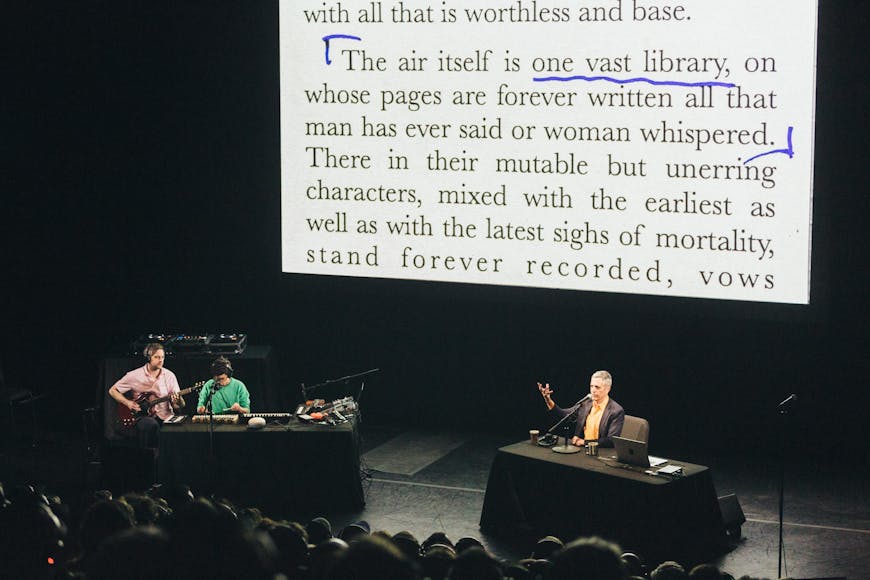
Ambience is my entreaty to others, perhaps. The old world I sullied to come to my own, my identity and history a fraught question so discarded that many didn’t even know I grew up amongst cemeteries and hospitals, I found space and a worthwhile challenge in seeing how even what is out of focus and in the depths can be foregrounded by consciousness and closer listening. What is silent is often deafening; the world, the internet, the browser, the website just as machinic & majestic as the piano or harp that man continuously fashions to bring something forth. And it is ephemeral and ever-changing and accessible and an instrument almost as pervasive as voice, and like the voice we have forgotten how powerful it can be. Listen closely to the bodies of each and realize they are just vessels for something more.

Drawling on and connecting the dots, I hope my practice—my way of making as my way of making—is now converging towards something intentional. This is a love letter to sound and what poetry has given to me. This is a love letter towards technologies from the ear to the pen & paper to the screen I write this on to the screen you read this on; to this space we convene on being more intimate, to the pluralities of the spaces we can make on the internet, to the invisibilities of the internet uplifted against exploitation drawn from their undermining; to the sacred spaces and godliness once we feel in tune with the world and each other, and feel at ease with how we can just rest. That the sound continues to play even when it is paused. To gathering spaces, the construction of spaces and tools that amplify this act of sincere and close listening. I hear the world and all the words that can emerge. I hear a road of connections and the history of human evolution and the optimism that what has been lost can be brought back to life.
I do not think there is one singular answer that can be drawn from here. I believe that ambience might be a trail to the very beginning, as it is a trail to revealing what is invisible, as it is a trail that has shapeshifted throughout time. I believe that close listening is but one of many answers. I think there is a conflation of ambience to purely what is invisible, when true ‘ambience’ is sensed when one fully communes with the environment. The environment is known, we withdraw to it, and its ambience reveals to itself. It is more of immersion rather than withdrawal, or perhaps a withdrawal to immersion and the world around.
But I think, in all my loneliness and desire to gather, in all the desire to feel interconnected and interdependent, in all the hopes for a world that people even want to continue shaping and tooling and making for themselves — there is a voice, even a slight tremor, a rumble, a lilt, and a song in a system within a universe and an environment and a system that has made it so that a wave can make my body tremble in ways that no other form can have and systems in which we can shape to continue exposing ourselves to these things that feel both the intensity of everything that is noise & everything that is silence & that silence which is everything.
Now I invite you to listen closely here with me, amidst this trail of letters: tune the song you’re playing or the voice next to you out and tell me about nature against machine. Tell me about the time you’ve last felt true silence, or keep it to yourself to let that feeling linger a bit more. Question what needs preservation and what has slipped by in this world. If you can put your ear down to hear your own head drum, tell me what is worthwhile.
Byline:
Chia is a net and ambient artist.
